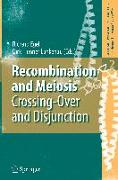Recombination and Meiosis
BücherAngebote / Angebote:
Once per life cycle, mitotic nuclear divisions are replaced by meiosis I and II – reducing chromosome number from the diploid level to a haploid genome, reshuffling the homologous chromosomes by their centromeres, and recombining chromosome arms by crossing-over. In animals, including humans, all this happens during the germ cell formation of eggs and sperm. Due to the reign of meiosis, no child is a true genetic copy of either parent. Central to mainstream meiosis, the mechanisms of reciprocal exchange at crossover/chiasma sites stand out as a controlled program of biologically significant molecular changes. To initiate the meiotic exchange of DNA, surgical cuts are made as a form of calculated damage that is subsequently repaired by homologous recombination. These key events are accompanied by ancillary provisions at the level of chromosome core organization, sister chromatid cohesion, and differential centromere connectivity. Great progress has been made in recent years to further our understanding of these mechanisms. Questions still open primarily concern the placement of and mutual coordination between neighboring crossover events. The current book addresses these processes and mechanisms in multicellular eukaryotes, such as Drosophila, Arabidopsis, mice and humans. The pioneering model systems of yeasts, as well as evolutionary aspects, will be addressed in a forthcoming volume.
Folgt in ca. 15 Arbeitstagen


